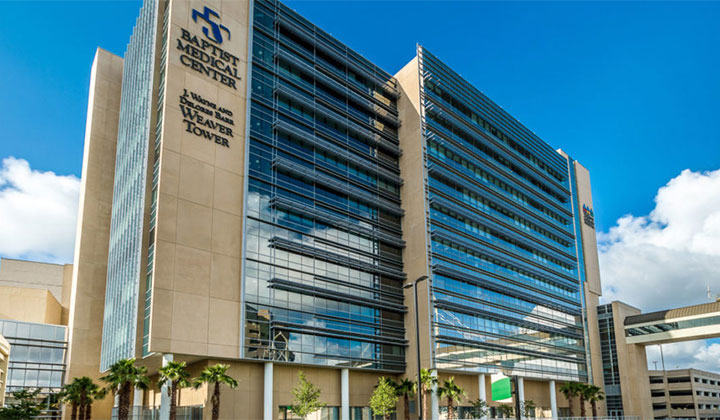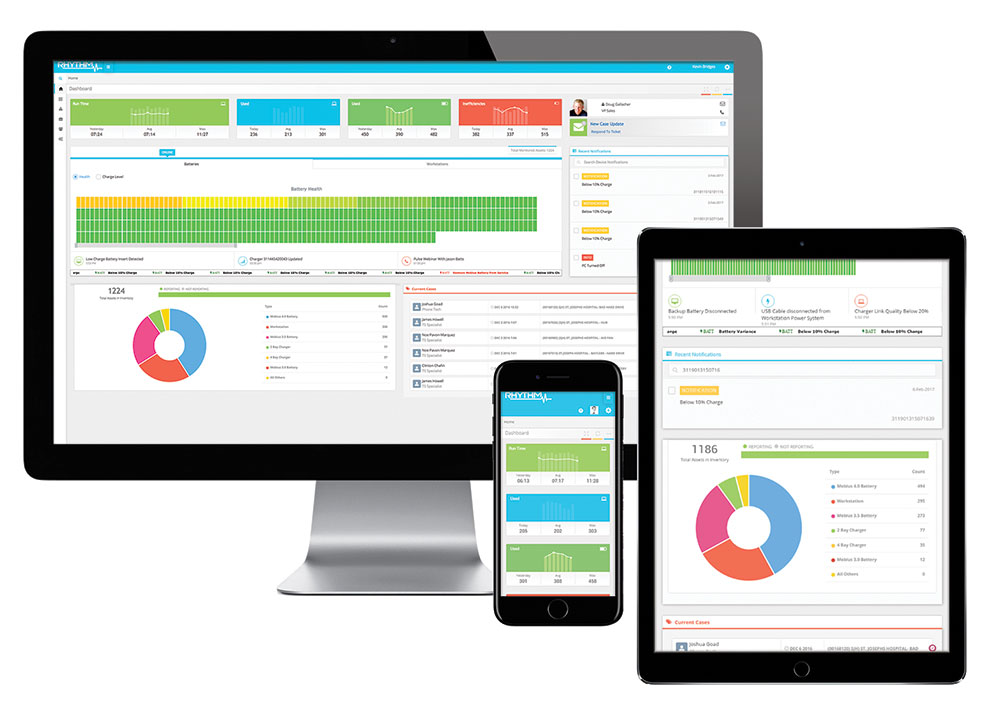
Baptist Health System and Rhythm Mobile Device Management
With five hospitals in the Jacksonville, FL area, Baptist Health was an ideal candidate for Rhythm, Enovate Medical’s cloud-based technology for fleet management of mobile EHR workstations. The Baptist Health system maintains a fleet of 650 Enovate Sydekick workstations, plus 1300 swappable MobiusPower batteries.
Challenges
Ty Ackerman, IT Software Asset Manager at Baptist Health, needed a quantifiable way to optimize and maintain their sizeable workstation fleet. “At our Heart Hospital we had twelve workstations on the fourth floor, yet there are only 24 beds on that floor,” Ackerman explained. “Why do I need a $10,000* workstation for two beds? We needed more data to size our fleet with accuracy.”
Baptist Health implemented a nine-month pilot study of Rhythm at their Heart Hospital before expanding to all five campuses. They quickly realized a wealth of valuable insight from Rhythm data.
“We had nurses complaining, ‘My battery only lasts two hours.,’” Ackerman said. “The diminished battery life was a mystery because we had replaced the batteries a year ago. Why are they lasting less than two hours now? I needed to understand why.”
 Rhythm Insights
Rhythm Insights
Battery Life – When the IT team studied the Rhythm data, they discovered that the nurses’ complaints about the short 2-hour battery life were exaggerated. The fully-charged MobiusPower batteries were capable of lasting 6-8 hours in this application. The Rhythm data showed that nurses were swapping out batteries with 25 percent remaining charge. What’s more, they were swapping in fresh batteries that weren’t fully charged – typically at 75 percent.
“My Chief Nursing Officer used this data to educate the nurses: Keep using the battery until the 10 percent alarm,” Ackerman said. “We created an educational card that also explained how the LED indicators show full-charge on the charging stations.”
Utilization – Rhythm was able to quantify if the nurses were taking full advantage of the workstation’s mobile functionality. By creating two reports – one tracking PC usage and the other tracking workstation movements – Ackerman was able to determine if the nurses were using workstations in a mobile or stationary manner, and how to accurately size the fleet.
Purchasing – When the Baptist Cancer Center needed two new workstations, rather than investing in more equipment, Ackerman used Rhythm. “I logged into Rhythm and found two workstations at the Heart Hospital with the lowest utilization,” Ackerman said. “Without this data, the nurse manager would not have relinquished the units. And, instead of buying two new workstations, we saved $20,000. One simple exercise with real data paid for almost the entire year of Rhythm across all five campuses in the Baptist Health system.”
Workflow – The cordless workstations at Baptist often include a battery-powered printer for labeling specimens. The nursing productivity boost from MobiusPower was squandered by constant battery swaps on the label printer. As an experiment, the IT team connected the printer directly to the MobiusPower battery. “We used the Rhythm data to validate the power draw from the printer,” Ackerman said. “We determined that the change would have almost no effect on the MobiusPower battery run times.”
Benefits
Collaboration – Successful patient outcomes require constant collaboration and Rhythm offered a data-driven approach to problem-solving. “Rather than nursing complaining and IT complaining, we’re putting it all together to talk to each other and understand,” Ackerman explained. “I understand more of their clinical needs, and they understand how to use our fleet more efficiently.”
Proactive Maintenance Supports the Patient – Before implementing Rhythm, we solely depended on our nursing staff to identify the need for workstation maintenance. “We can now see issues before the nurse even realizes there is an issue,” Ackerman said. “With proactive maintenance, I can better ensure the workstation is not going to fail when the nurse is charting while the patient is coding.”
Cost Efficiency – Rhythm data ultimately translates into dollars. “We were able to identify a workstation that was only used 20 minutes a day on average in a month,” Ackerman explained. “So why do we need that unit? Rhythm allowed
us to lower our operational cost by analyzing workflow data.”
Partnership – Enovate helped Baptist Health realize the critical role their workstations perform in helping nurses focus on improving patient care. The hospital also appreciated Enovate’s stake in the success of their mission.


 Rhythm Insights
Rhythm Insights